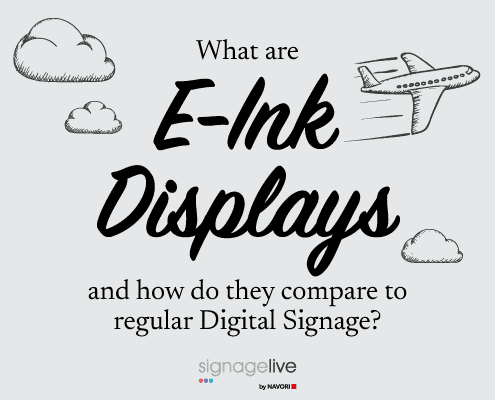
Interactive Digital Signage plays a significant role in society, serving as a valuable tool for communication, information dissemination, and entertainment.
One of the key roles of interactive Digital Signage is in the realm of public communication. Interactive displays can be found in a variety of public settings, including airports, shopping malls, and transit centres, providing real-time information and updates to the public.
For example, interactive displays at airports can provide flight information, gate assignments, and other important updates, while displays in shopping malls can provide information on store locations and promotions. Interactive Digital Signage can also be used in emergency situations to provide important safety information and updates to the public.
Cloud-based content management systems (CMS) can help to simplify and centralise content management, enabling staff to share updates from anywhere to one, some or all the screens across a network. The most effective offer a range of enterprise-ready functionality, which includes Two-factor Authentication for sign-ins, and Approval functions to ensure that only pre-approved content goes live.
Choose to display your content as a full-screen display, or alongside other imagery, videos and updates as part of a multi-zone template design.
Look out for ISO-27001-certified CMS providers, that is, providers, which are verified to be able to handle and protect large volumes of data.
Interactive Digital Signage is also commonly used in the retail industry to engage customers and drive sales. For example, interactive displays can be used to showcase products and provide detailed product information, helping customers to make informed purchasing decisions. In addition, interactive displays can be used to provide personalised recommendations to customers based on their browsing and purchase history, further enhancing the shopping experience.
Consider investing in a CMS solution that can facilitate and build upon the interactive Digital Signage experience. Platforms, such as Signagelive come with a dedicated Kiosk Mode, which ensures that one swift touch interaction can instantly interrupt the placeholder content and trigger the launch of an interactive web application. This could be to show additional menu options and special offers in a quick service restaurant, or to elicit customer feedback.
With a CMS Web Trigger API, you can also develop Lift and Learn platforms to personalise the shopping experience and offer some customer service assistance. When customers lift and interact with a product in a showcase, Lift and Learn solutions trigger additional information about that item, straight to a nearby screen.
In the education sector, interactive Digital Signage can be used to enhance the learning experience for students. For example, interactive displays can be used in classrooms to provide interactive lessons and learning materials, allowing students to engage with the content in a more interactive and dynamic way. Interactive displays can also be used in libraries and other educational facilities to provide access to a wide range of resources and information, such as e-books, articles, and research materials.
Interactive Digital Signage is also increasingly being used in the entertainment industry to provide a more immersive and interactive experience for visitors. For example, interactive displays can be found at theme parks and other attractions, allowing visitors to access information and plan their visit in real-time. In addition, interactive displays can be used in concert venues and other live events to provide information on performers and events, as well as to enhance the overall experience for attendees.
Look out for cutting-edge CMS technologies that can offer content management – and simplified device control, all from a single platform. Patented technologies, such as Signagelive Real Time Events (RTEs) make it easy to immerse customers or visitors in the on-screen entertainment by making changes to the surrounding environment.
The solution enables you to send commands within content files to trigger, at any stage of the content sequence, everything from motorised screen movements to changes in the lighting. Affordable and simple to set up, it is essentially a way for anyone in the hospitality or retail industries to set the scene and ambiance.
Overall, interactive Digital Signage plays a vital role in society, serving as a valuable tool for communication, information dissemination, and entertainment. By leveraging the capabilities of interactive displays, organisations can more effectively engage with their audiences and provide a more dynamic and interactive experience.




You must be logged in to post a comment.